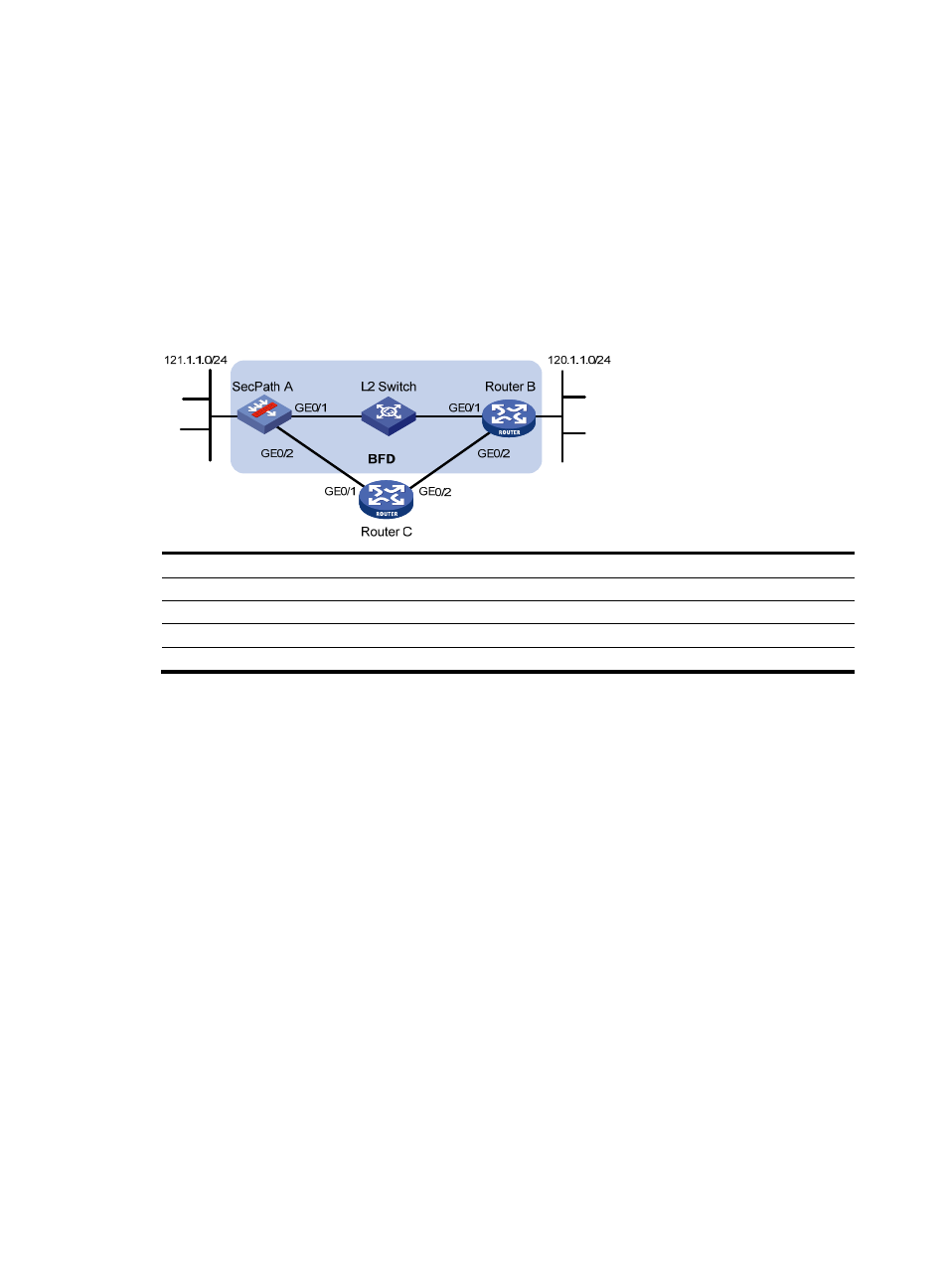Network requirements, Configuration procedure – H3C Technologies H3C SecPath F1000-E User Manual
Page 367

342
BFD for static routes configuration example (direct next hop) at
the CLI
Network requirements
In
, configure a static route to subnet 120.1.1.0/24 on SecPath A, configure a static route to
subnet 121.1.1.0/24 on Router B. Enable BFD for both routes so that when the link between SecPath A and
Router B through the Layer 2 switch fails, BFD can detect the failure immediately and inform SecPath A
and Router B to communicate through Router C.
Figure 238 Network diagram
Device Interface IP
address
Device
Interface
IP address
SecPath A
GE0/1
12.1.1.1/24
SecPath B
GE0/1
12.1.1.2/24
GE0/2
10.1.1.102/24
GE0/2
13.1.1.1/24
SecPath C
GE0/1
10.1.1.100/24
GE0/2
13.1.1.2/24
Configuration procedure
1.
Configure IP addresses for the interfaces. (Details not shown.)
2.
Configure BFD:
# Configure static routes on SecPath A and enable BFD control packet mode for the static route
through the Layer 2 switch.
<SecPathA> system-view
[SecPathA] interface GigabitEthernet0/1
[SecPathA-GigabitEthernet0/1] bfd min-transmit-interval 500
[SecPathA-GigabitEthernet0/1] bfd min-receive-interval 500
[SecPathA-GigabitEthernet0/1] bfd detect-multiplier 9
[SecPathA-GigabitEthernet0/1] quit
[SecPathA] ip route-static 120.1.1.0 24 GigabitEthernet0/1 12.1.1.2 bfd
control-packet
[SecPathA] ip route-static 120.1.1.0 24 GigabitEthernet0/2 10.1.1.100 preference 65
[SecPathA] quit
# Configure static routes on Router B and enable BFD control packet mode for the static route
through the Layer 2 switch.
<RouterB> system-view
[RouterB] interface GigabitEthernet0/1
[RouterB-GigabitEthernet0/1] bfd min-transmit-interval 500
[RouterB-GigabitEthernet0/1] bfd min-receive-interval 500